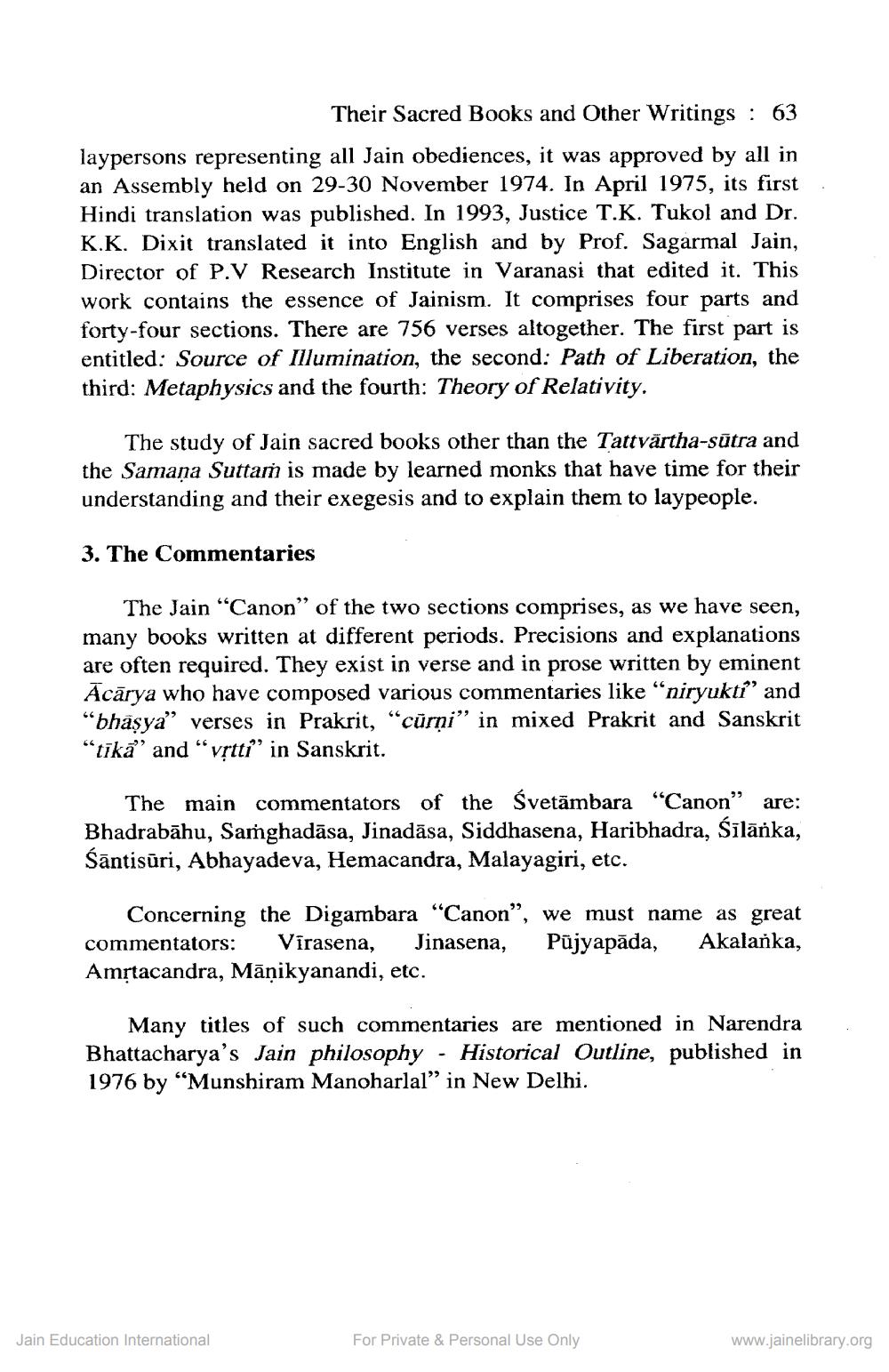________________
Their Sacred Books and Other Writings : 63 laypersons representing all Jain obediences, it was approved by all in an Assembly held on 29-30 November 1974. In April 1975, its first Hindi translation was published. In 1993, Justice T.K. Tukol and Dr. K.K. Dixit translated it into English and by Prof. Sagarmal Jain, Director of P.V Research Institute in Varanasi that edited it. This work contains the essence of Jainism. It comprises four parts and forty-four sections. There are 756 verses altogether. The first part is entitled: Source of Illumination, the second: Path of Liberation, the third: Metaphysics and the fourth: Theory of Relativity.
The study of Jain sacred books other than the Tattvärtha-sūtra and the Samana Suttaí is made by learned monks that have time for their understanding and their exegesis and to explain them to laypeople.
3. The Commentaries
The Jain “Canon” of the two sections comprises, as we have seen, many books written at different periods. Precisions and explanations are often required. They exist in verse and in prose written by eminent Ācārya who have composed various commentaries like “niryukti" and “bhâsya” verses in Prakrit, “cūrņi” in mixed Prakrit and Sanskrit "tikā" and "vrtti” in Sanskrit.
The main commentators of the Svetämbara “Canon” are: Bhadrabāhu, Saṁghadāsa, Jinadāsa, Siddhasena, Haribhadra, Śīlānka, śāntisūri, Abhayadeva, Hemacandra, Malayagiri, etc.
Concerning the Digambara “Canon”, we must name as great commentators: Vīrasena, Jinasena, Pujyapāda, Akalanka, Amstacandra, Māņikyanandi, etc.
Many titles of such commentaries are mentioned in Narendra Bhattacharya's Jain philosophy - Historical Outline, published in 1976 by “Munshiram Manoharlal” in New Delhi.
Jain Education International
For Private & Personal Use Only
www.jainelibrary.org




